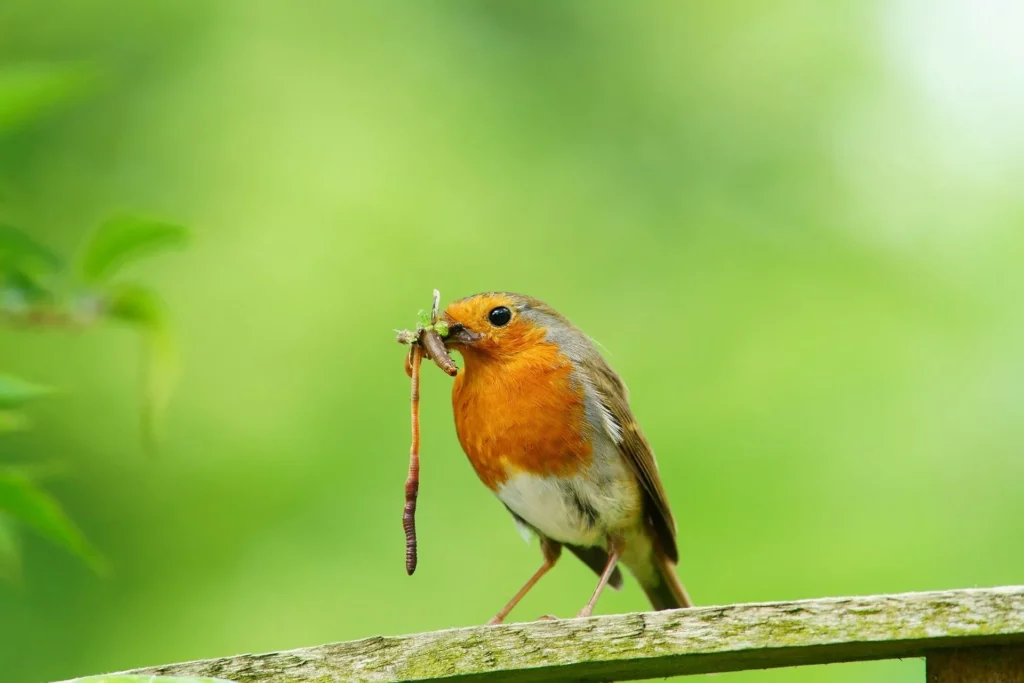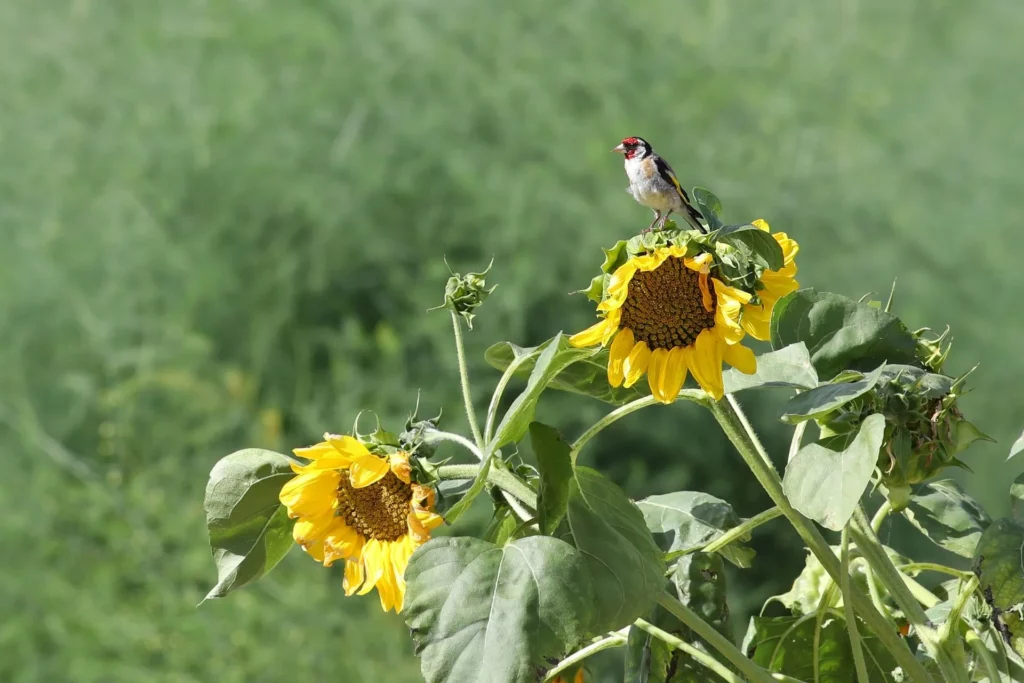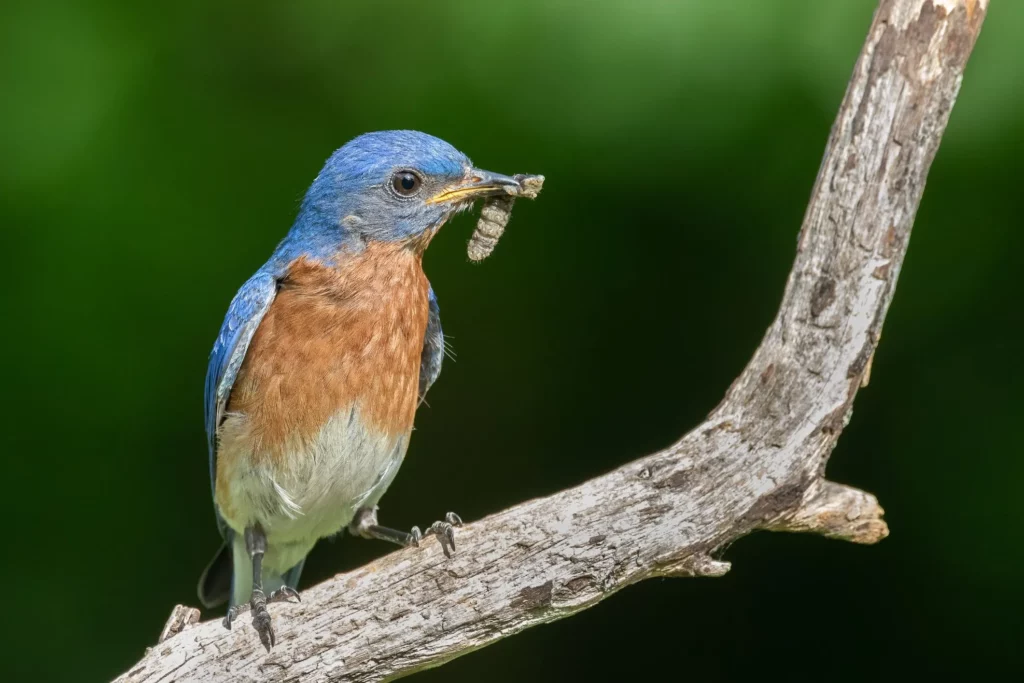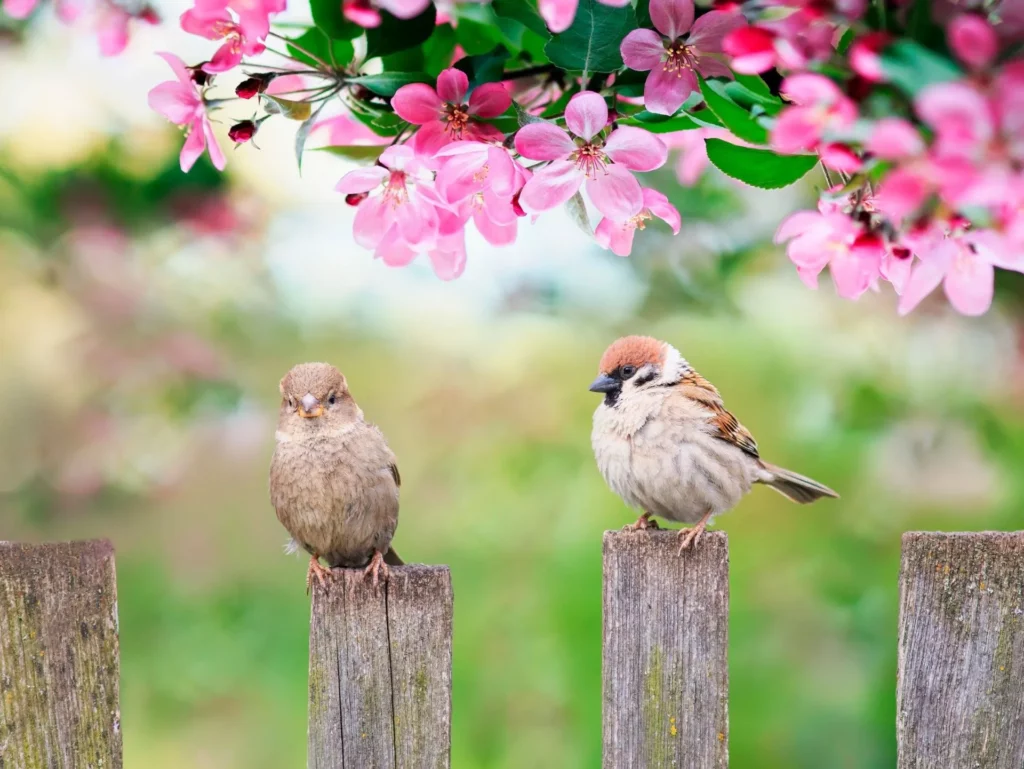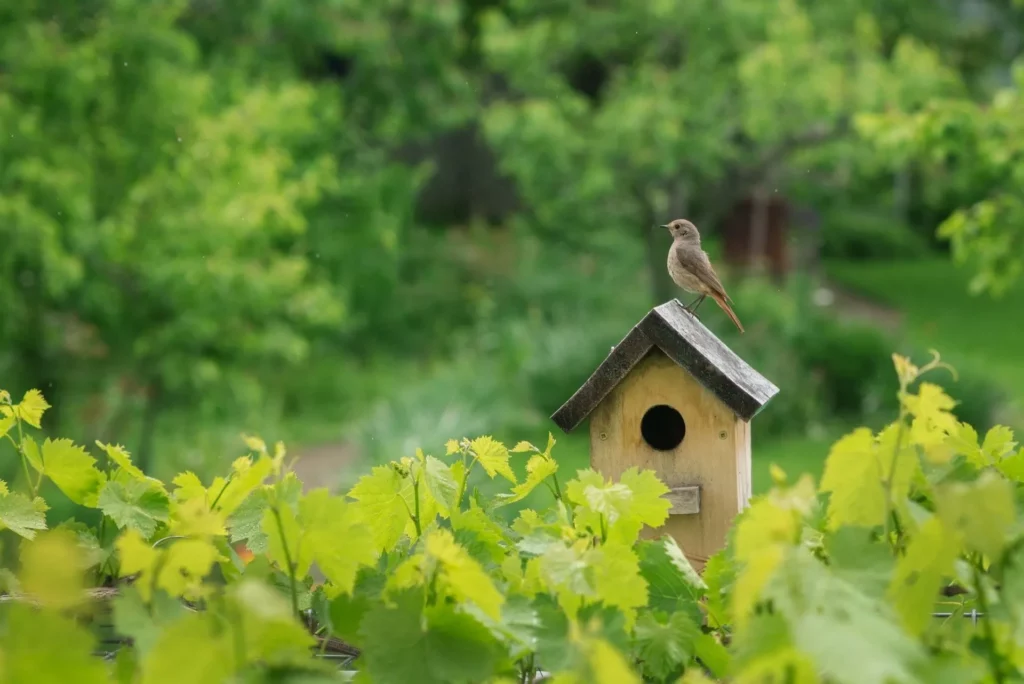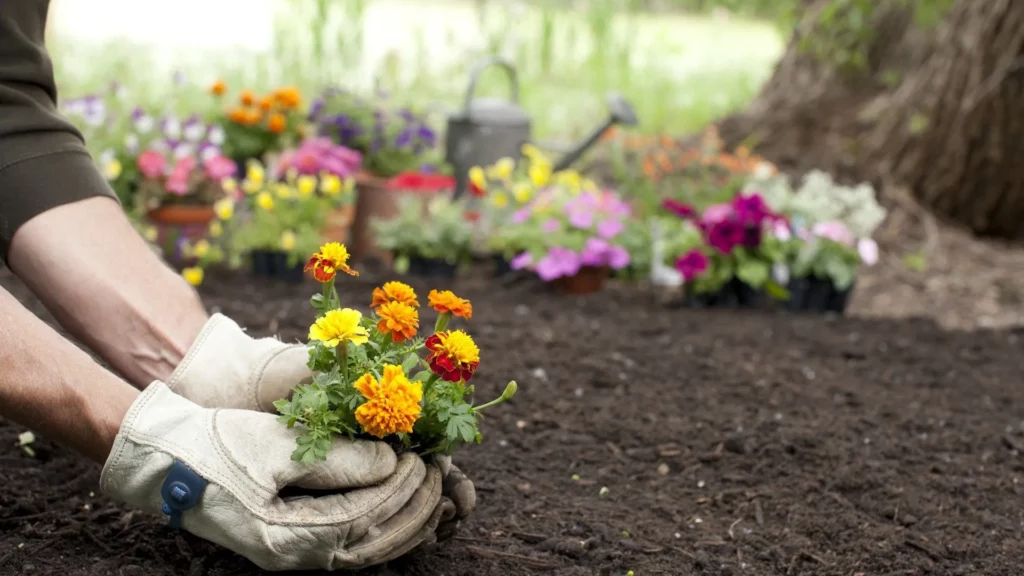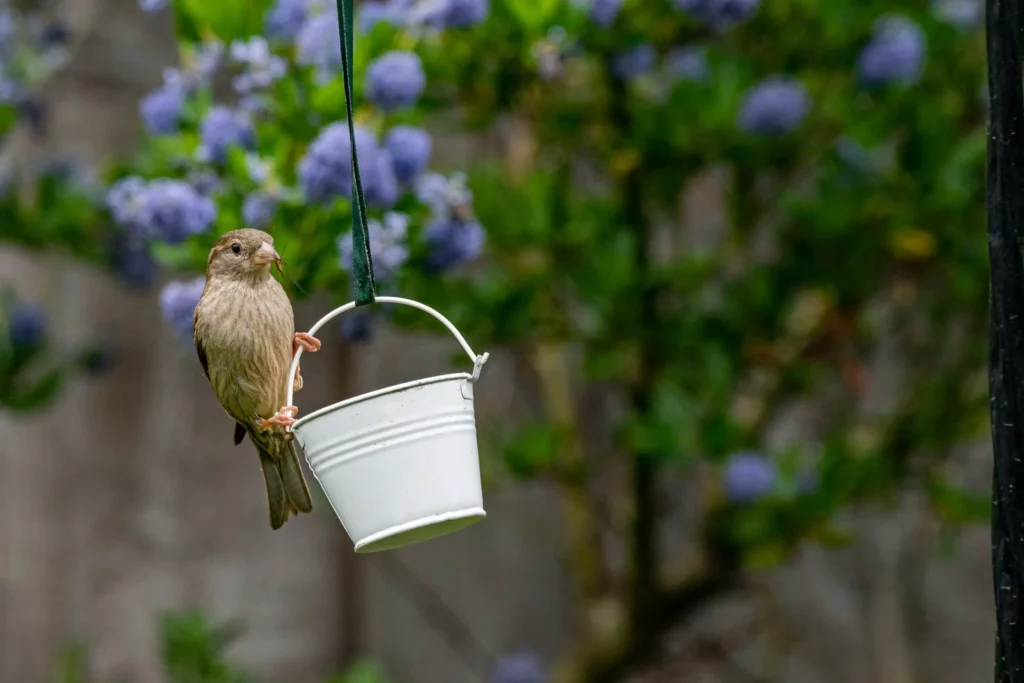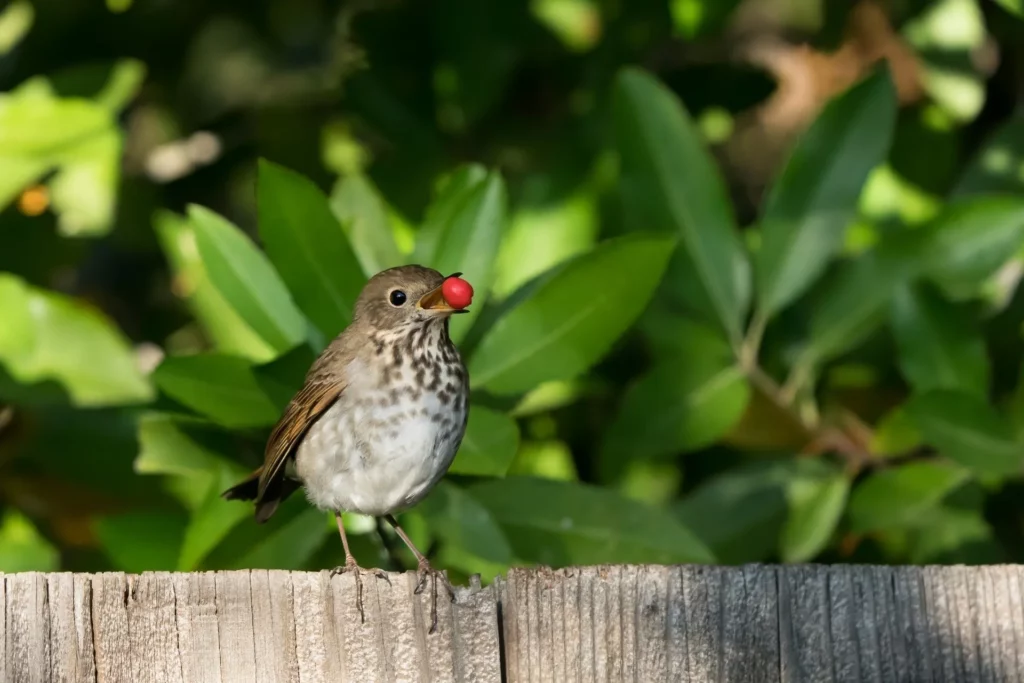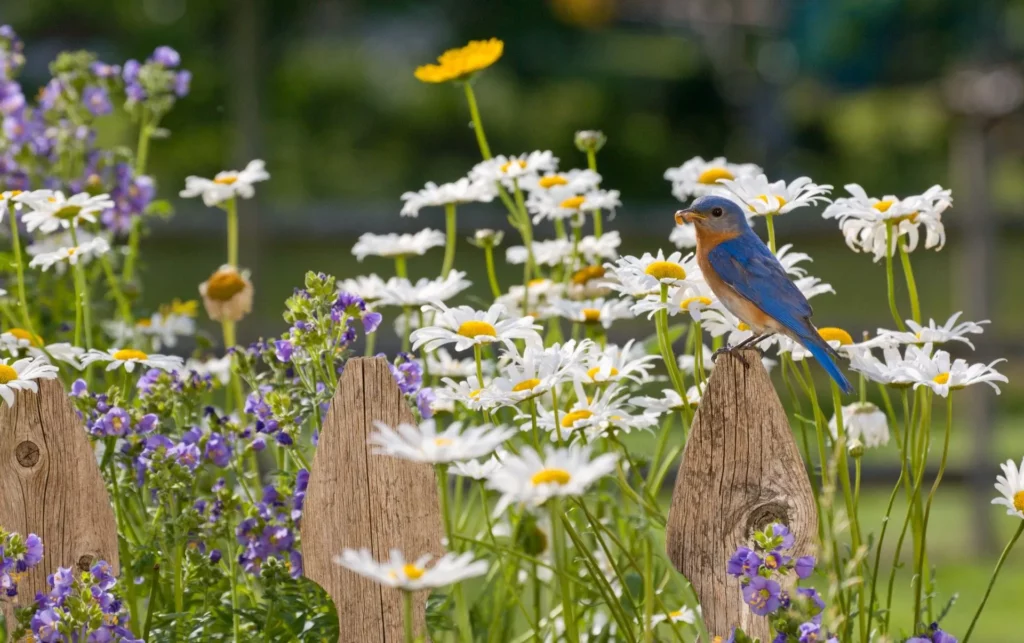Have you glimpsed the fancy flash of a hummingbird and then stopped to watch? Spotting a bird in their natural environment gives a sense of wonder.
Some people love this feeling so much they travel far and wide to make the spot, but this doesn’t have to be the case. Creating a birding garden is a wonderful way to attract a host of feathered species right to your backyard. This book, will give you some handy tips on how to use natural plants and simple devices to create a garden that attracts birds.
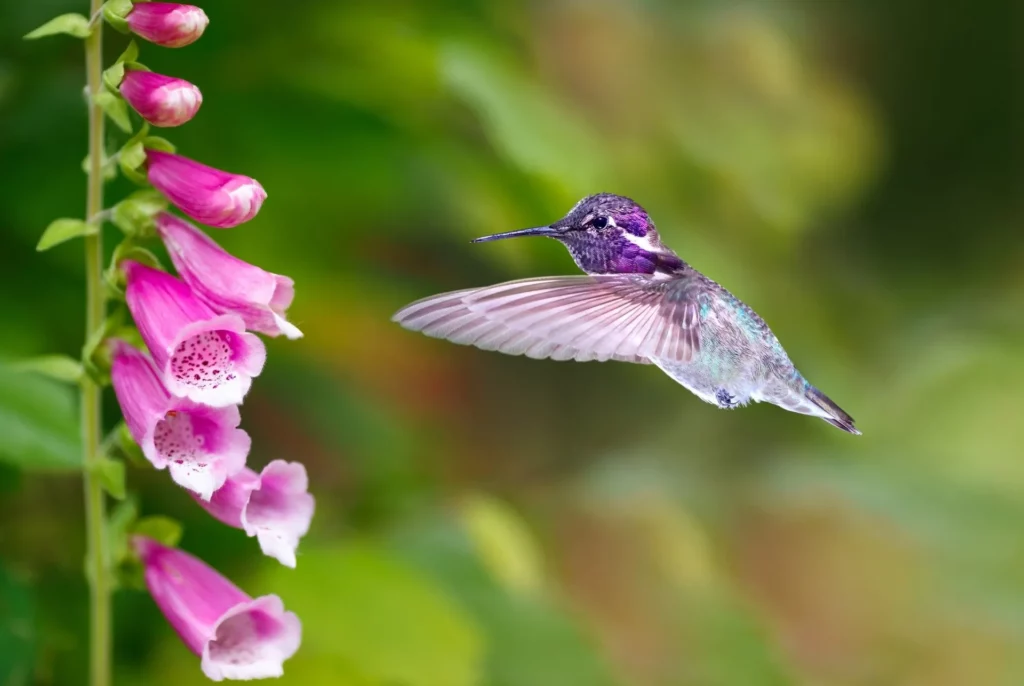
A hummingbird feeding from purple foxglove flowers
